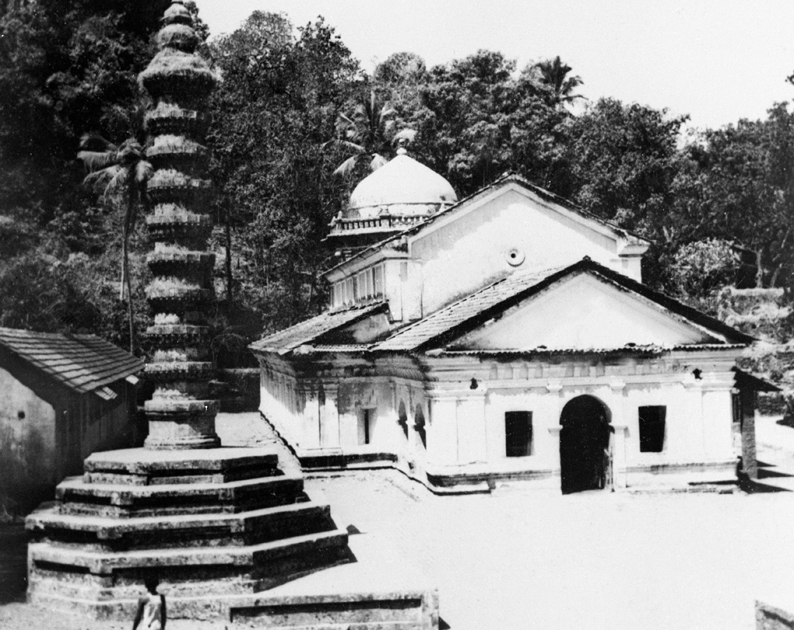Saptakoteshwar temple at Narve, Goa, India is considered to be one of the six great sites of temples of Lord Shiva in the Konkan area
Shrine’s History
Saptakoteshwar, a form of Shiva, was one of the chief deities of the Kings of the Kadamba dynasty around the twelfth century. The temple was built by the King for his wife Kamaldevi who was a staunch devotee of this god. The Kadamba kings proudly used the title Shree Saptakotisha Ladbha Varaveera. The gold coins discovered at Chandor, Goa , Gopikapatna and other places of the kings Jayakeshi I, Jayakeshi II, Jayakeshi III, Shivachitta Paramadideva, Soideva, etc., have inscriptions reading: Saptakotishvaralabdha ? Varaprasada ? which means “with the grace of Lord Saptakotishwara”, the family deity of Kadambas. These coins were often referred to as Saptakotisha-Gadyanakas. In 1352, when the Kadamba kingdom was conquered by the Bahmani Sultan Allauddin Hasan Gangu, Goa came under the rule of the Sultan for about 14 years.
A number of temples were destroyed during this period and the linga at the Saptakoteshwar temple was dug up by the troops. In 1367, the army of Vijayanagar King Harihararaya defeated the Bahmani Sultan’s troops in Goa and managed to restore most of the temples to their former glory including that of Saptakoteshwar. According to the records, the temple was reconstructed by Madhava Mantri by the end of the 14th century.
When the temple was demolished in 1560 by the Portuguese , the linga was used as a good shaft until some Hindus managed to rescue it. The idol was then smuggled across the river to Bicholim where it was installed in a brand new temple and revamped in 1668 by the Maratha Chhatrapati Shivaji Maharaj. The construction of the new site was carried out by Shri Shivaram Desai on Chatrapati Shivaji Maharaj’s blessings & guidance.
Legends Associated with This Shrine
The legend behind the name Saptakoteshwar is also quite interesting. According to the legend, seven holy sages once set out to pray to Lord Shiva near the place where five holy rivers met the sea. They prayed for seven crore years at the end of which, Lord Shiva appeared to grant their wishes and agreed to stay at the place in one of his incarnations. This incarnation is known as Saptakoteshwar .
Architectural Relevance of This Shrine
With its shallow Moghul dome mounted on an octagonal drum sloping tiled roofs, European style Mandapa, or assembly hall and tall lamp tower or Deepastamba, the temple is situated in an archaeologically important area. The surroundings of the temple are tinged with several Brahminical laterite and stone caves. In the vicinity of it existed a Jain Math, the ruins of which are still visible. It was probably an important Jain temple patronised by the Kadamba rulers before they shifted loyalty to Sri Saptakotishwar.
By Road
There are frequent bus connections to Old Goa from Panaji and other places in Goa.
By Rail
The two railway stations- at Vasco da Gama and Margao- also have a number of trains arriving at Goa from the rest of the country.
By Air
The nearest airport at Dabolim which has frequent flights from Mumbai, Chennai, Delhi, Bangalore and Kochi, besides chartered flights from overseas.
Events Celebrated at This Shrine
The most important festival celebrated at the temple, attended by thousands of devotees from Goa and other parts of India, is Gokulashtami which is considered to be the day on which Lord Shiva appeared in this incarnation to grant the wishes of the seven holy sages.Shivaratri
